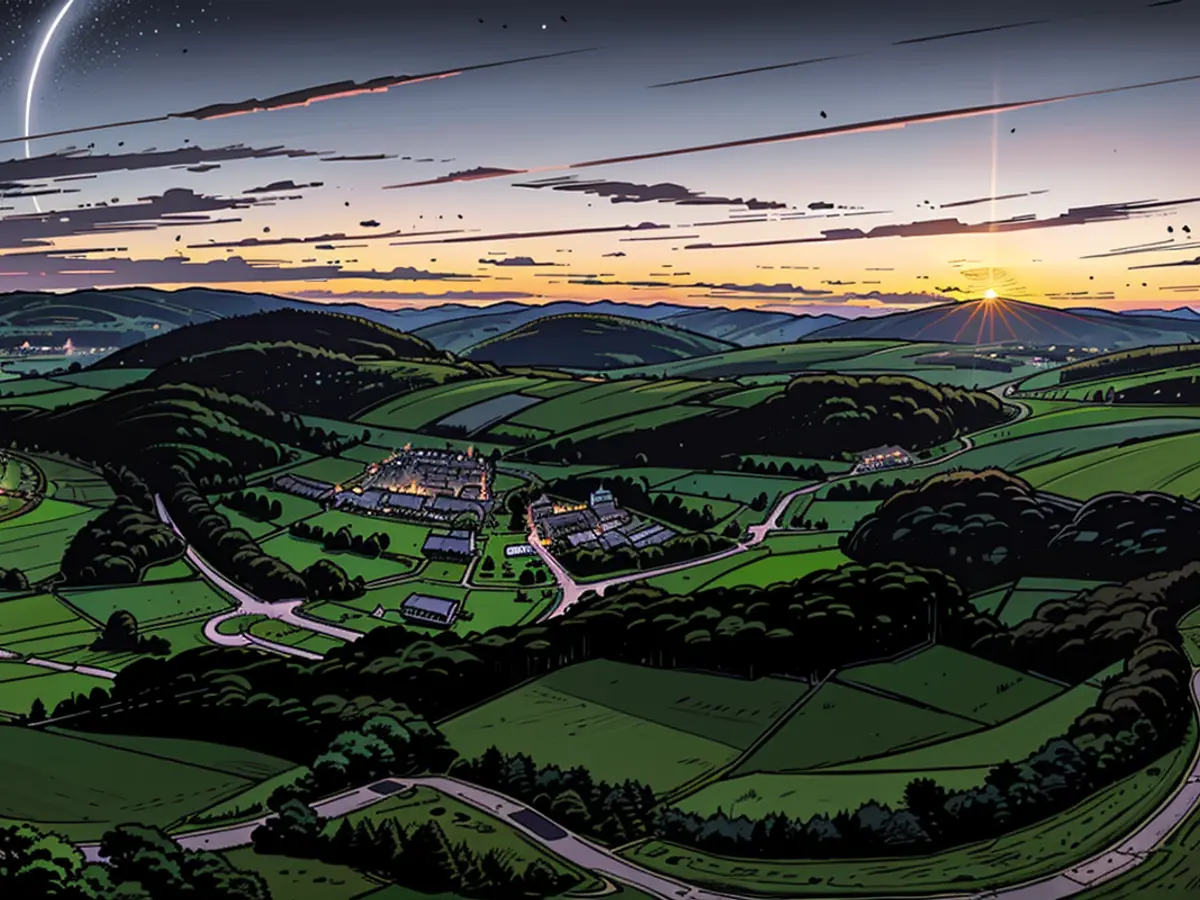The Rapid Decrease in Day Lengths Explained
As summer comes to an end, the sun-loving folks start noticing the nights growing longer at an accelerated pace. Experts have provided insights into why the darkness is arriving earlier now.
The decrease in daylight duration is escalating on a daily basis until the autumnal equinox towards the end of September, when it will exceed 4 minutes per day. However, at the summer and winter solstices, the difference is barely half a minute. The days in Germany have been gradually becoming shorter since late June. But what causes the variation in day length in the first place? According to Klaus Reinsch from the Institute of Astrophysics and Geophysics at the University of Göttingen, it's the sun's apparent trajectory in the sky.
The path of the sun in the sky, which reflects Earth's orbit around the sun, forms a sinewave-like curve. This curve becomes flatter at the summer and winter solstices, reaching its steepest point between them at the vernal and autumnal equinoxes. At these equinoxes, the sun moves across the celestial equator, transforming between the northern and southern hemispheres, as per the expert. The sun's declination, or celestial latitude, undergoes significant changes daily at these points, leading to a shift in the day length.
Marked distinctions between North and South
In Germany, the variation in day length is quite substantial throughout the year. There are significant discrepancies between the North and South, as highlighted by these contrasting examples: Sylt, situated at 55 degrees north latitude, experiences less than 7-hour days at year's end, but more than 17 hours in June. Meanwhile, the Bavarian Alps, located at 47 degrees north latitude, witness around 8 hours of daylight in winter and less than 16 hours in the summer.
Carolin Liefke from the Haus der Astronomie in Heidelberg believes the primary cause of these different day lengths is Earth's tilted axis. Consequently, the region remains light or in darkness for half a year at the poles, contingent upon their orientation, while minimal alterations in daylight duration is observed at the equator.
The following explanation by Klaus Reinsch sheds light on why the sun's path in the sky changes, leading to varying day lengths throughout the year. The sun's declination, or celestial latitude, undergoes significant changes daily at the spring and autumn equinoxes, causing a shift in the day length.
In contrasting regions of Germany, such as Sylt and the Bavarian Alps, the variation in day length is quite substantial due to Earth's tilted axis. For instance, Sylt, closer to the North Pole, experiences shorter days in winter and longer days in summer, while the Bavarian Alps, closer to the equator, have minimal alterations in daylight duration throughout the year.







